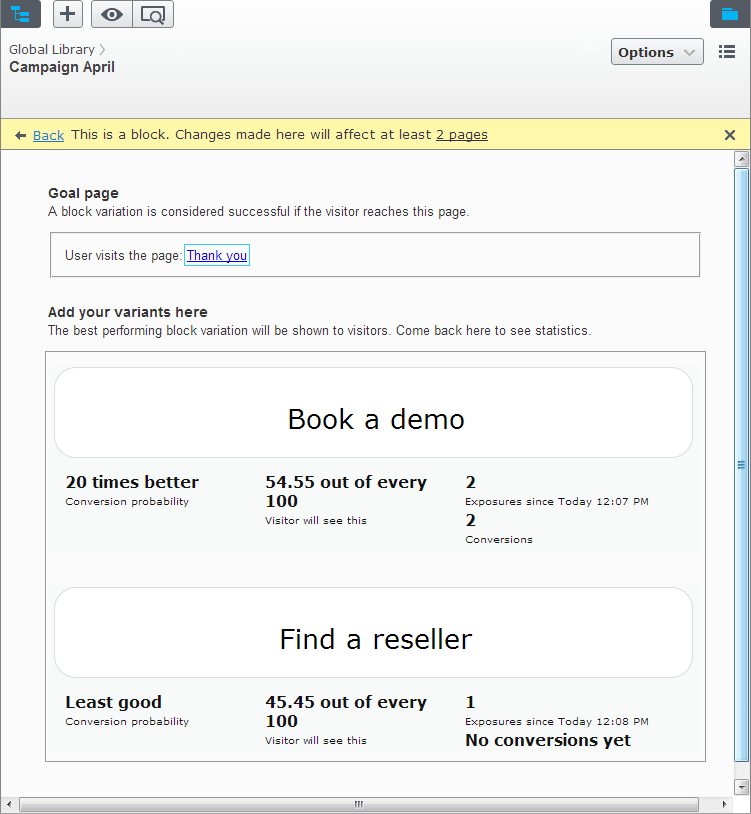 Self-Optimizing Block
Self-Optimizing Block
The Optimizely Digital Experience Platform contains many features to support you in your daily work. Depending on how your solution is set up, some features described in this documentation may not be available to you. Contact your system administrator to find out more. See Optimizely World for technical information.
Self-Optimizing Block is a multivariate testing add-on that randomly displays a block variant to visitors. You monitor the progress of the test. The variant that generates the most conversions is the one that appears most over time.
A/B testing provides a more functionally-rich way of gauging site visitor reactions to content versions.
After you install the add-on, a self-optimizing block type is available when you create new Blocks.
Creating content for multivariate testing
- Select New Block in the editorial interface.
- Select the Self-Optimizing Block type to create content for multivariate testing.
- Select a goal page for conversion, such as a confirmation page after posting a form.
- Add the block variants you want to include, preferably 2-4 variants with similar content.
- Publish the self-optimizing block.
- Drag the self-optimizing block you created to a landing page and publish it.
A self-optimizing block is indicated with a specific icon in edit view.
You cannot track external links. For example, a conversion is not registered if the conversion page has a shortcut link to an external Web page.
Analyzing statistics
Statistics are counted only in live view, and automatically show the most successful block over time. The Self-Optimizing Block renders the best performing block variant in edit view.
Exposures are the number of page views, and Conversions are the number of visitors reaching the goal page.
